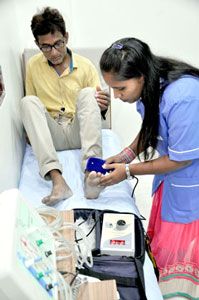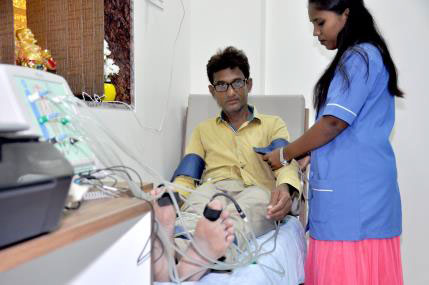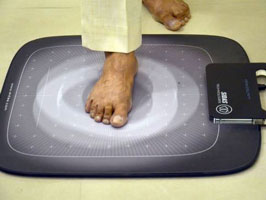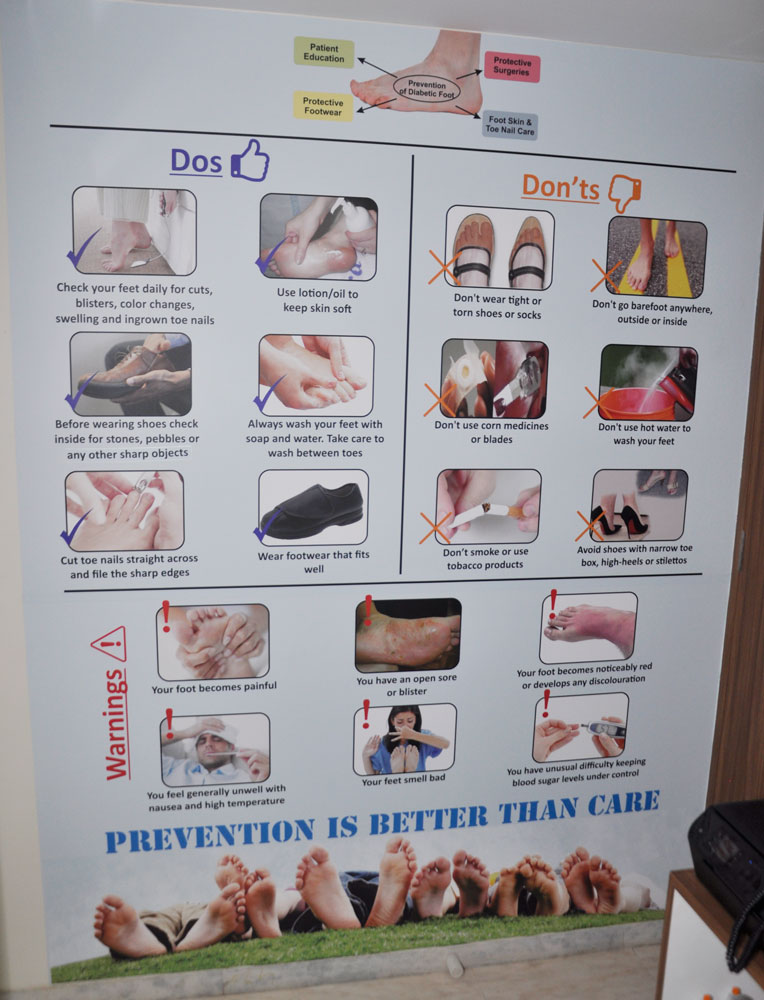Diabetes Foot Clinic

The foot supports the body, bears and absorbs the impact of walking around. Here in our centre we guide and help you to walk with care as the foot is one of the major organs that gets affected with diabetes.
We have good news for you as here in our centre we are equipped to help you with early detection and diagnosis for foot complications which can lead to serious handicaps. Early symptoms of neuropathy, ischemia and other deformity is detected with the latest technological advances. We guide you to wear the needed footwear and insoles to prevent recurrence of any deformity.
Studies conducted on diabetic patients show that 15% of patients experience a foot ulcer in their lifetime. It is now concluded that 15 – 20% of patients with such foot ulcers need an amputation, which can be avoided with proper foot care and constant follow-ups. Also, it is seen that 85% major limb amputations are preceded by a foot ulcer.
The goal of treatment is to help you manage these symptoms, so that they can be treated and arrested at an early stage.

Management

- All diabetic patient’s feet are inspected at every visit.
- Obtain current history of neuropathic symptoms like tingling numbness, burning pain in the legs, gastrointestinal disorders like loose motions (diarrhoea) or constipation, erectile disorders.
- Obtain current vascular history – not able to walk short distance, pain or cramps in the legs.
- Prior history of angioplasty or vascular surgery, cigarette smoking, retinopathy, and renal disease.
- The examination should include inspection of the skin, assessment of foot deformities, neurological assessment (10-g monofilament testing), and vascular assessment, including pulses in the legs and feet.
- Screen for decreased sensation in feet, tingling, numbness in feet with the help of instruments as biothesiometer, monofilament.
- Examination of the feet are done to detect deformity, corn, callus, nails swelling of the leg, infections, ulcers, gangrene, etc.
- Scanning for abnormal pressure which can cause ulcers can be detected with the use of podiascan.
- Examination of the pulses can be detected in the peripheral artery by using hand doppler studies & to predict vascular status ankle-brachial index is used.
- Comprehensive foot evaluation each year to identify risk factors for ulcers and amputations.
- We provide general preventive foot self-care education to all patients with diabetes.
- The use of specialized therapeutic footwear is recommended for high-risk patients with diabetes, including those with severe neuropathy, foot deformities, or history of amputation.

